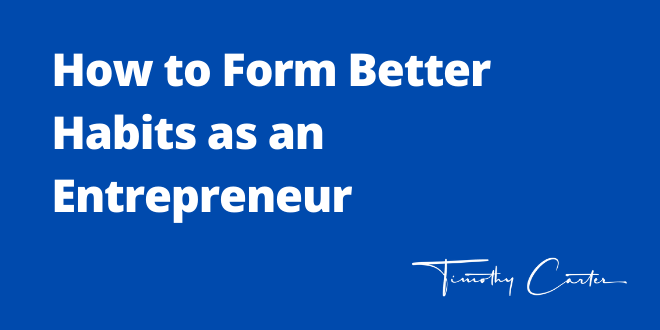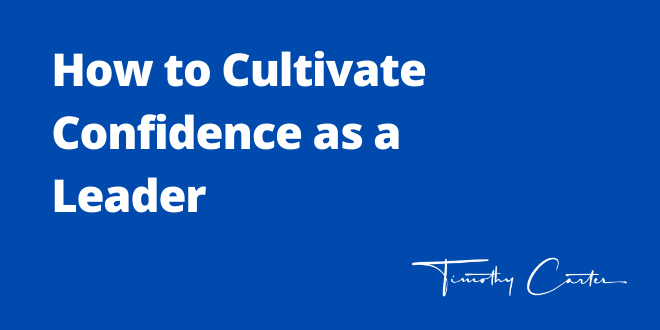
How to Host Better Virtual Meetings
February 11, 2021
Why Entrepreneurship Is the Engine of Economic Development
March 4, 2021For better or worse, our habits define us and, if significant enough, can shape our future. The habits we practice every day, whether big or small, eventually add up as the sum total of our behavior. They impact our decisions, our actions and even our internal thoughts and feelings. Good habits can make us smarter, more physically fit and better at our jobs, while bad habits can make us stagnate — and possibly sabotage our own careers.

Accordingly, being able to positively change our habits (i.e., introducing new good habits and eliminating old bad habits) is one of the biggest keys to long-term success, no matter how you define that success. Of course, the issue here is that changing habits can be very difficult. Ingrained habits are ridiculously hard to stop; practicing a habit continuously reinforces it, making it harder and harder to break away from the pattern. And starting something new requires a surplus of focus, attention and willpower.
So how can you do it? How can you form better habits as an entrepreneur?
Understand the anatomy of a habit
Your first job is understanding the “anatomy” of a habit. Why do habits form and what do they look like?
You can think of habits as unfolding over four mini phases:
- An initial prompt. First, there’s some kind of initial prompt. Something serves as a trigger that makes you want to do something. For example, you might pass a coffee shop on your way to work that reminds you of those delicious cappuccino drinks you love. Or you might hear a tone or feel a vibration whenever you get a new email.
- The craving. Next, the prompt triggers a craving. You see the coffee shop, so you start thinking about the taste of a cappuccino. You hear the ringtone, so you start feeling anxiety about what the email could be—and the fact that you should probably answer it immediately or something bad might happen.
- The action. In response to the craving, you’ll take an action. This is the heart of the habit. You pull into the coffee shop drive-thru to place your order. You pick up your phone and pull up your email.
- The reward. Finally, you experience a reward, usually in the form of released “feel-good” chemicals in the reward center of the brain. You might taste something sweet or feel a deep sense of relief by checking your email.
These four phases can serve as a blueprint that can help you analyze and eliminate your bad habits — or construct new habits from scratch.
Breaking a bad habit
Let’s look at breaking the bad habit first.
- Eliminate or modify the trigger. Your first job is to change the stimulus — the triggering event that begins the cycle. In some cases, this is easy. For example, you could simply turn off notifications when you get an email. Other times, this might be more challenging; for example, you may have to take a new route to work.
- Introduce an unpleasant response. Even after changing the trigger, you might have to deal with a residual feeling. Or you might not be able to change the trigger at all. In these cases, introduce an unpleasant response to the trigger. This is more of a mental exercise; for example, can you learn to see the cappuccino as something unhealthy or gross?
- Make it harder to take action. Habits are hard to continue if they demand extra physical or mental exertion. For example, you could hide the mail icon on your phone so you can’t check your email as impulsively.
- Make the reward unsatisfying. Finally, you could make it unsatisfying to complete the habit. For example, you could start to order decaf to reduce the pleasant rush you would otherwise feel from a caffeinated beverage.
Starting a new habit
So how can you start a new habit?
- Give yourself an automatic prompt. Everything starts with a trigger. Set up something automatic, like a ringtone, or leave visual prompts for yourself, like sticky notes, to start.
- Make the prompt attractive. Start inducing a craving within yourself. Find a way to make the notion of engaging in the habit attractive.
- Reduce friction. Make it easier to do the habit. Purchase better tools or equipment to make the job easier or start the habit with someone else to add social pressure.
- Reward yourself. Finally, take the time to reward yourself. Some habits, like physical exercise, come with a natural reward of their own. Otherwise, you’ll have to back up the habit with a reward for yourself, like a small piece of candy or another type of indulgence.
Whether your goals are to exercise every day, stop responding to every email automatically, guest blog more consistently, or something in between, these tenets can help you break your bad habits and start new ones. This doesn’t mean the process will be easy, but you’ll at least have a framework that can drive your decisions and behaviors in the future.
Originally appeared in Entrepreneur






